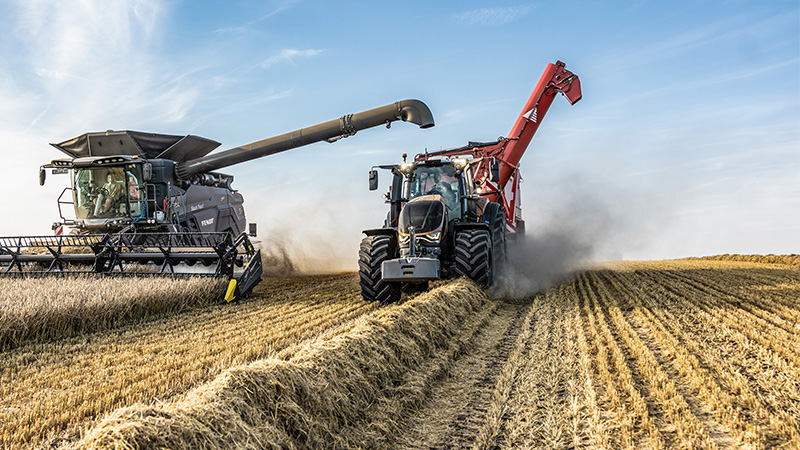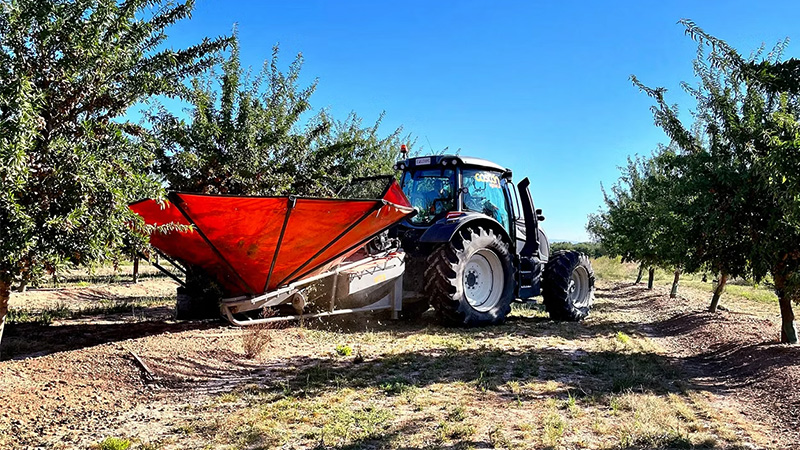Previously we have discussed the origins of Smart Farming and how investing in a base level of technology can open up a whole world of Smart Farming opportunities, while also protecting your investment. In this blog we set out a few of the top arguments for Smart Farming, and how you can save time, money, resources while being more sustainable and profitable.
Improved accuracy
One of the most talked-about benefits of Smart Farming is the increased level of precision and accuracy that can be achieved. There is no one simple answer as to how much more accurate Smart Farming is compared to traditional methods as the satellite autoguidance systems used in Smart Farming are available with different levels of pass-to-pass accuracy, ranging from +/-30 cm to +/- 2 cm. Also, different tasks and implements require different overlaps. For example, manual steering while mowing results in overlaps of around 30 cm. With autoguidance such as Valtra Guide, this is reduced to just 5 cm. For fertilizer spreading, manual steering may give an overlap of about 5% on the headlands. With Valtra Guide and Section Control, the overlap can be reduced to 0%.
Valtra Guide dramatically reduces overlaps, increasing accuracy.
Increased work efficiency
One of the greatest things about Smart Farming is its potential to save valuable time. Self-steering tractors use autoguidance software to automatically steer the tractor along waylines. Autoguidance software such as Valtra Guide can save up to 5% in time.
Improved fuel efficiency
Smart Farming allows farmers to be much more precise. By reducing overlaps it takes fewer passes to complete a task, thus reducing the total distance the tractor is driven to get the job done. As well as saving time, this also saves fuel. Even reducing tasks like mowing by just one pass can have a cumulative effect over many hectares. Scroll down to see our Whitepaper for more details.
Reduced consumables
Farming by traditional means often results in significant under and over-application of sprays. Smart Farming technologies have the potential to reduce this by automatically switching off sections of the sprayer as the tractor meets the headland. Section Control by Valtra saves on average 5-10% of fertilizer costs by reducing overlaps to 0%.
Different conditions call for different methods. The soil and topography may vary across one field, meaning the requirement for spray or fertiliser may differ as well. Variable Rate Control automatically adjusts the flow of spray according to prescribed plans making sure exactly the right amount of application is delivered to the right location. As well as reducing waste and cost this also improves yields.
Increased yields
Over and under spraying affects the quality of the crop with patchy areas of burnt plants and stunted underperforming plants. By eliminating over and underlaps using Section Control farmers can grow consistently even and healthy crops, maximising yields. By using Valtra Guide when drilling, over-seeding is eliminated. Traditional farming methods rely on seed drills being manually turned on and off by the driver. This can lead to errors and areas being double drilled at the headland. When this happens too many plants will try to grow in the same area, all competing for light, water and nutrients. Inevitably, this leads to reduced yield in these areas.
Smart Farming autoguidance allows the driver to concentrate on the job at hand, reducing stress and saving their energy for more detailed work, such as at the headland.
Lower driver stress
Working long days and concentrating hard on maintaining straight lines whilst controlling implements can be stressful. Smart Farming can reduce the stresses of daily work in many ways. Autoguidance takes care of maintaining a straight course freeing up the driver to concentrate on the implement and task at hand. Section Control takes all the guesswork out of switching the sprayer on and off.
Ease of use
Of course, this technology needs to be easy to use if it is to actually reduce work stress for the driver. Smart Farming implements use ISOBUS connection that means any implement can be connected to the tractor with ‘plug and play’ ease of use. Simply connect the implement, plug in the ISOBUS and you’re good to go! Valtra SmartTouch armrest can control Smart Farming technologies from a simple touchscreen and joystick interface, that is easier to use than a smartphone. Because all functions are controlled from this one simple device, there is no need for training on multiple devices and interfaces.
Easier recording and reporting
Maintaining logs, recording tasks and reporting can take time but is not always the most rewarding task. With Smart Farming tasks are automatically recorded and can be transferred wirelessly. By automating the collection and transfer of data using a Farm Management Information System (FMIS) you can be sure all your records are up-to-date and accurate. With a few simple clicks, you can pull up historic data and automate document creation using tools like TaskDoc.
Smart Farming enables automatic collection of data and syncing to FMIS software.
Easier financial forecasting
By handling all this information centrally from FMIS software it is easy to see how long tasks take, how much fuel and inputs are needed, and cost plans. With smart telemetry systems like Valtra Connect, it is even possible to send diagnostic data to service partners to plan maintenance needs in advance, preventing unscheduled downtime.
Improved sustainability
There are many ways that Smart Farming can improve sustainability. From reducing spray wastage to improving fuel economy. By reducing the number of passes needed to complete tasks and reducing turning on the headland soil compaction is minimised.
Find out more about Smart Farming
The estimates and savings mentioned in this blog are taken from Valtra's Smart Farming White Paper. If you are interested to find out more, you can download your free copy by visiting our Smart Farming page.




